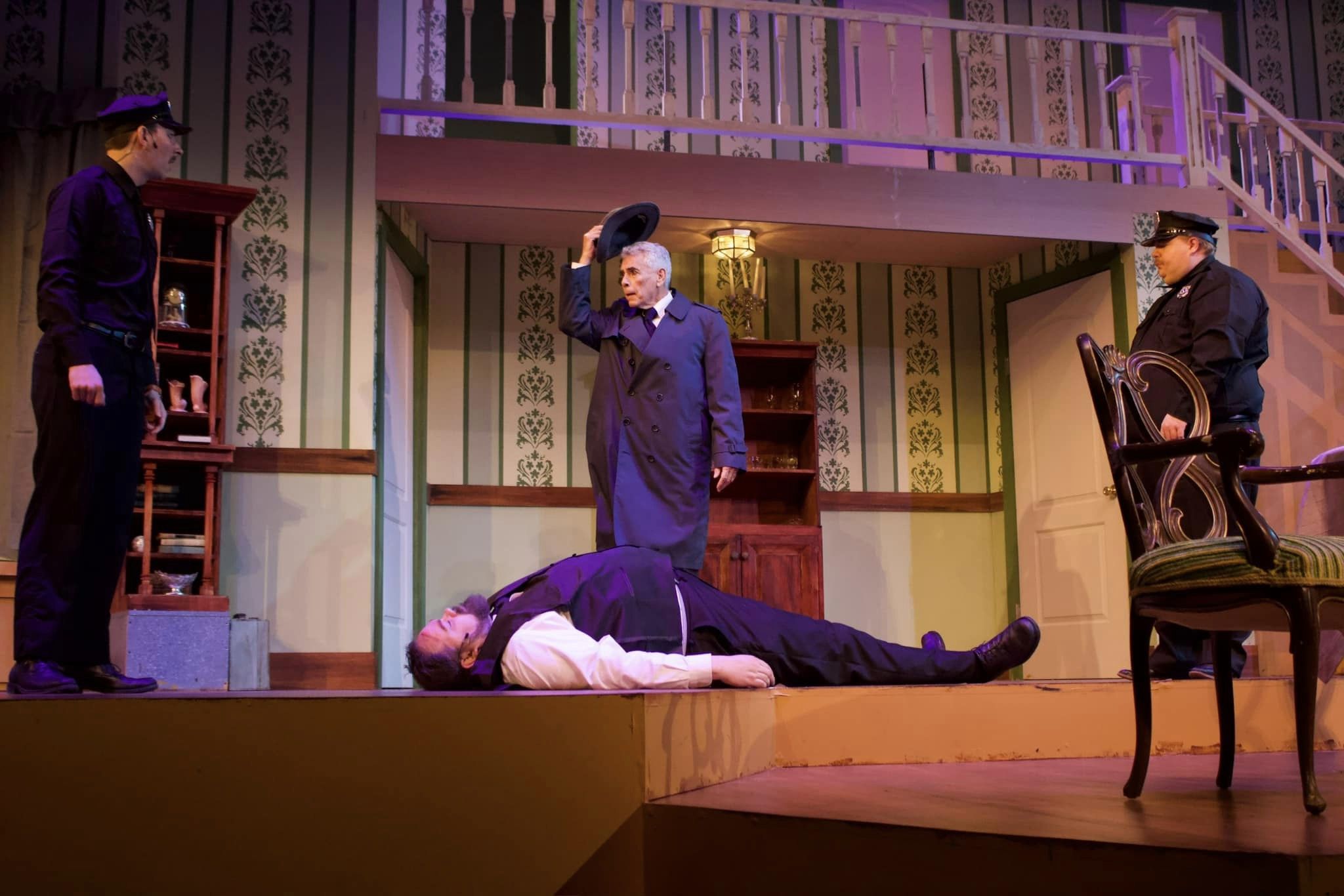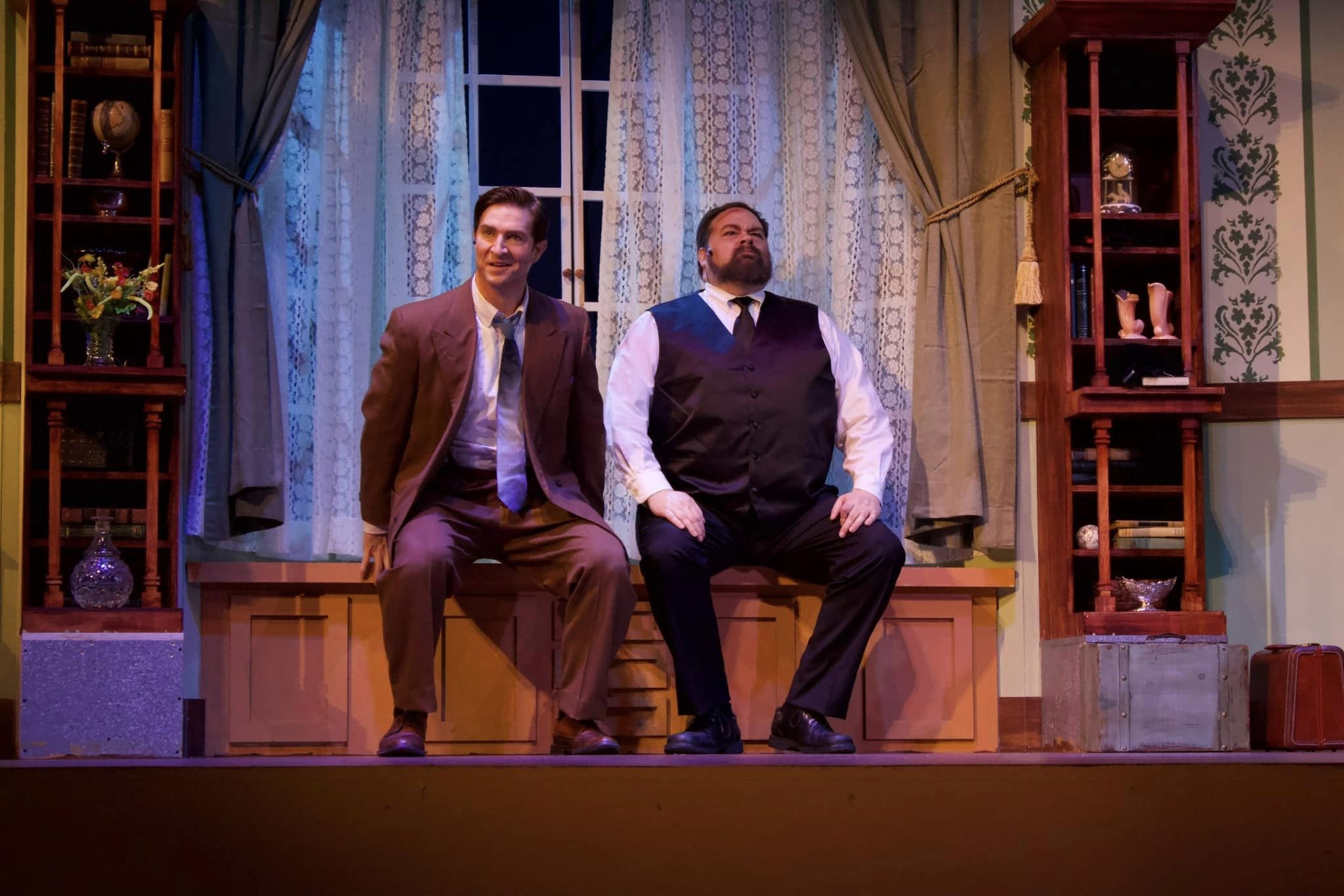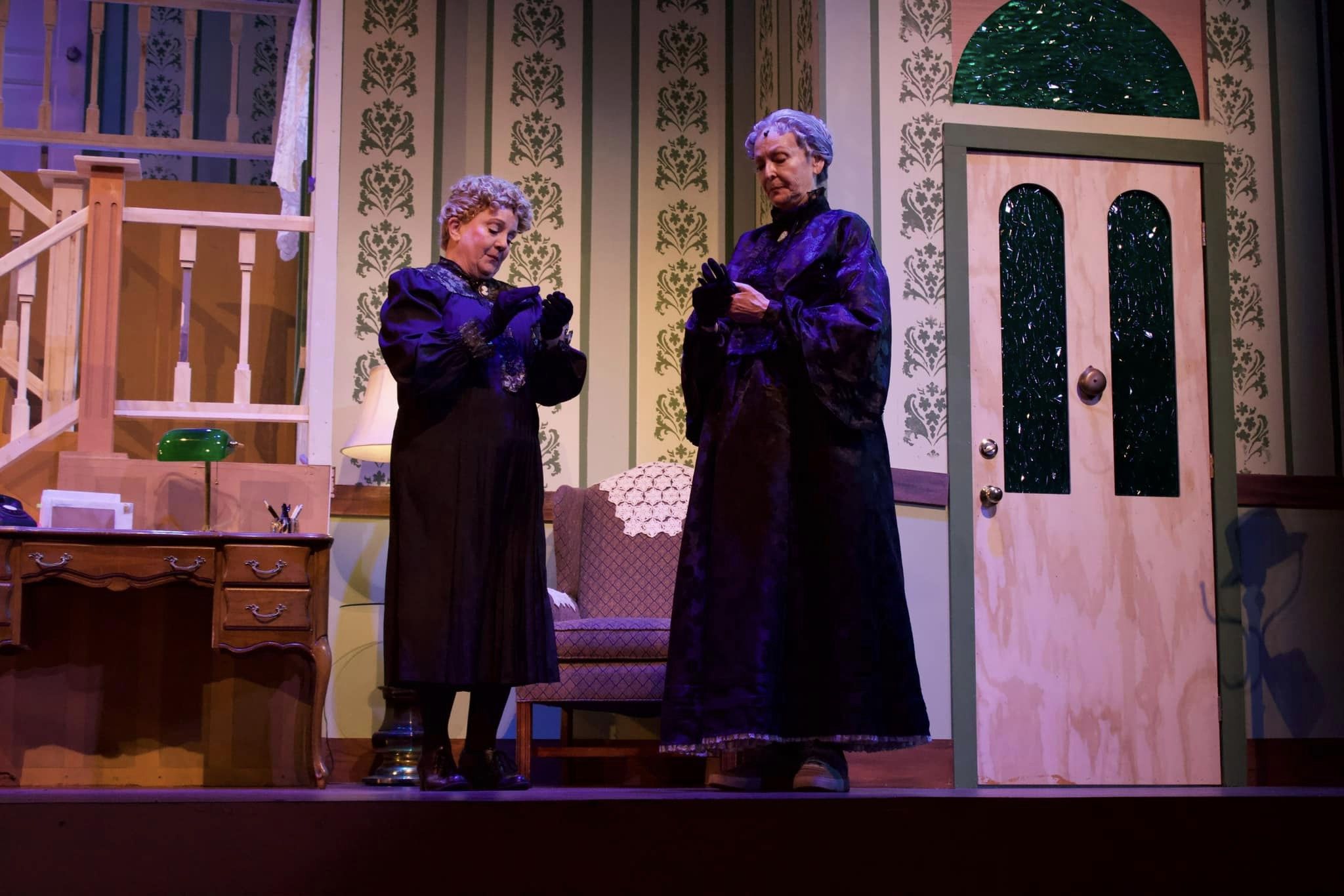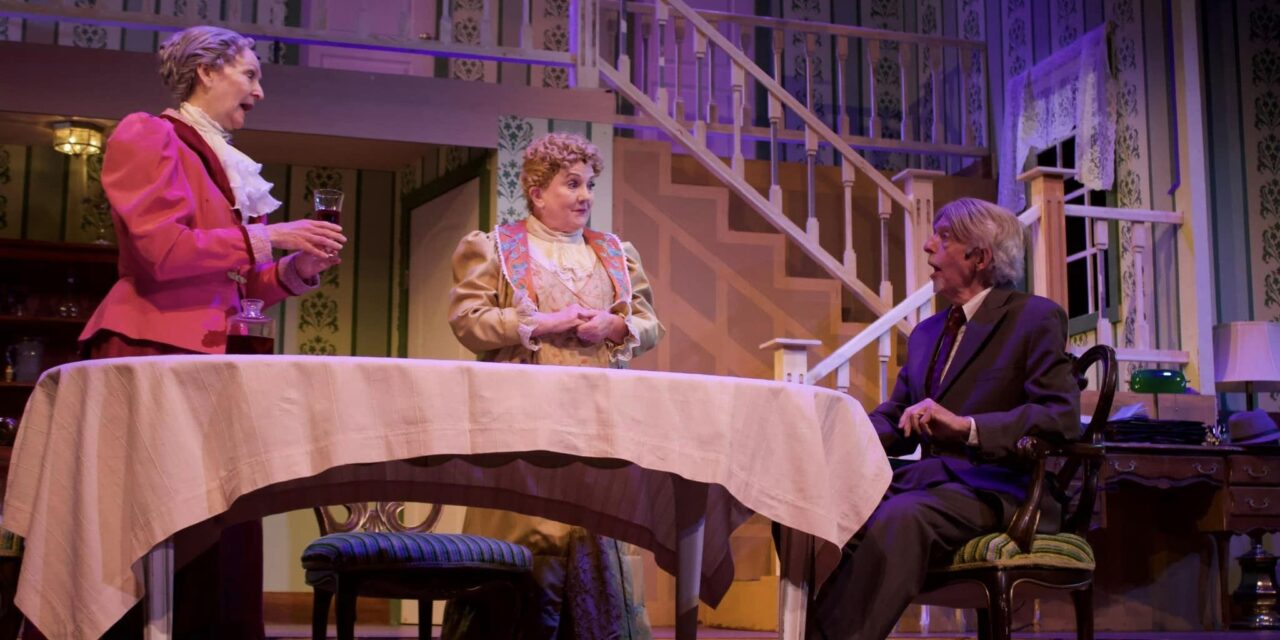SALT LAKE CITY — On Thursday, March 21st, 2024 I saw Arsenic and Old Lace by Joseph Kesselring at The Grand Theatre. The play opens with Abby Brewster (played by Betsy West) talking to Reverend Dr. Harper (played by Kelly S. Ward); although Abby is wearing a dress straight out of the early 20th century, there’s mention of war and Abby says that “this Hitler person is not a Christian” to give a sense of place. Abby’s sister Martha (played by Alyssa Hickman Grove), also in period clothing, mentions not wanting to use electric lights, and their nephew Teddy Brewster (played by Jim Nelson) pretends that he’s Theodore “Teddy” Roosevelt. Perhaps all of this is meant to lay the groundwork for when the Brewster sisters reveal that they murder old, lonely men, but even in retrospect this feels like a generous interpretation. It’s hard to discern if this is genius writing or just the benefit of hindsight.
The script contains numerous meta jokes about theatre. Mortimer Brewster (played by Bryan Harper), nephew to Abby and Elaine, is a theatre critic and the Reverend (whose daughter Mortimer is dating) loathes the theatre. Mortimer seems to have a certain contempt for the stage as well: while on his way to review a show says, “I can save time and write my review on the way to the theatre”. Toward the end of the show when is is about to be murdered, he recounts the play he saw that night and it matches exactly what’s happening on the stage. Officer O’Hara (played by Robert A. Easton) also employs theatre jokes throughout trying to rope Mortimer into listening to his new script. Meta jokes about the art form that the art itself embodies aren’t new. And while I couldn’t find the correct distance to enjoy them myself, perhaps others will.

Show closes April 6
Because the play has virtually no stakes, the main source of enjoyment comes from subverted expectations. For example, when Mortimer discovers a dead body in the window seat, his aunts readily reveal that they’ve murdered several men over the years and quite enjoy it (“We don’t try to stop you from doing things you like to do”). Later, when Jonathan and Dr. Einstein plan to kill Elaine (who has stopped by unannounced in the dead of the night) by dragging her into the basement, she inexplicably gets free. While there is the threat of violence or consequences, not unlike A Gentleman’s Guide to Love and Murder, the normally heinous act of unaliving someone is turned into a comedy where (mostly) everyone gets away with no lessons learned.
The production didn’t seem to make great use of the technical apparatuses (directed by Adam Day) that can make a show more immersive and engaging. For example, in one scene a window overlooking a graveyard is opened at night to bird sounds. However, the window seat sounding like a coffin each time it opened (sound designed by Joe Killian) did turn it into a bit of a gag. The strongest scene technically was when the lights were turned out in an attempt to hold a funeral service while Jonathan sneaks in the body of a man he’s killed. A basement door, opened by Dr. Einstein, was the only light illuminating the stage. This entire scene was a highlight from a show that’s otherwise completely lit throughout (lighting designed by Spencer Brown).

Characters speaking simultaneously is a device used in many plays; however, in this production, the one scene that employed this was noisy and difficult to follow. In the scene, an old man has come to look at an empty room at the Brewster’s while Mortimer argues with his office on the phone to get out of reviewing a play. As the old man is talking to the sisters, who are basically planning to murder him right then and there, Mortimer is oblivious while adjacent to all of this happening. Tension builds as Mortimer loudly yells into the phone as the two old women plan to kill this person right in front of their nephew within minutes of him arriving.
The character I enjoyed the most was David Hanson‘s Jonathan, the estranged, and equally deranged, brother whose arrival is announced with loud, threatening banging on the front door. His deep, menacing voice throughout gave him an edge that set him apart from the other characters — even his accomplice mostly just did his bidding. Hanson towered over the other actors, and never missed an opportunity to threaten anyone, truly embodying the dark side of the Brewster family’s lineage of insanity.

Arsenic and Old Lace is a murder play with no mystery, but with enough twists and turns to keep the audience guessing what will happen. On one hand, it’s interesting to see a show about a group of delightfully insane people who seem quite harmless (but aren’t) while an equally murderous, but rather terrifying, character is sent away. Which stands to reason that if Arsenic and Old Lace has any moral lesson it’s that the best way to get away with murder is to be old and sweet.

These reviews are made possible by a grant from the Salt Lake County Zoo, Arts, and Parks program.





